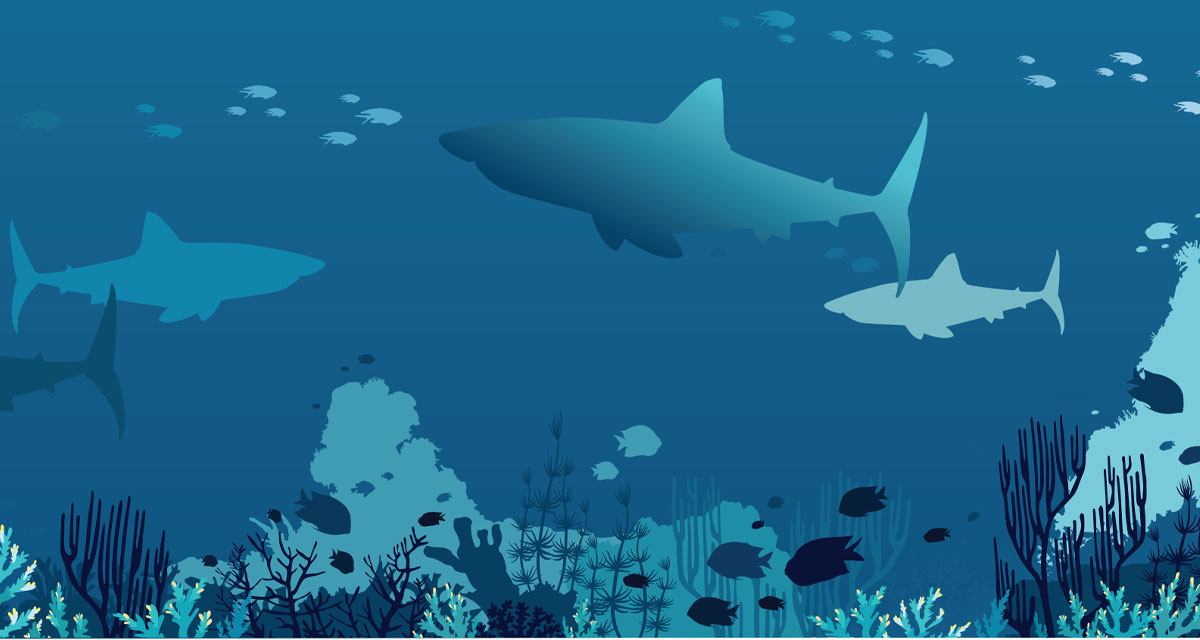While researching my next summertime vacation destination, I’ve found countless tropical tour operators touting once-in-a-lifetime ocean kayaking, stand-up paddleboarding and snorkeling experiences online and on social media. As someone with an irrational fear of jellyfish, taking a sea kayaking tour would be much more up my alley than swimming straight into the hard-to-see tentacles of a sea stinger.
The more I searched around for sea kayaking tours in vacation hotspots like Hawaii, southern California and the Caribbean, the bright blue waters and sunny weather looked nothing short of enticing. However, once I stumbled upon a viral YouTube video of a shark sneaking up on a kayak fisherman and biting his kayak, I began having doubts about my aspirations of paddleboarding in the Pacific.
It seems as if we are fed conflicting messages by the news and scientists on the likelihood of seeing shark violence. On one hand, we are told that shark attacks are extremely rare and that the odds of dying in a car accident on your way home from work are much higher. On the other hand, it seems as if more and more shark encounters and brutal attacks on innocent swimmers are popping up in the news each month.
One culprit for a considerable chunk (no pun intended) of unprovoked shark attacks is the aggressive tiger shark. Growing up to 18 feet in length, these irresponsible predators sometimes operate by biting potential prey first and asking questions after the victim is already bleeding. Although humans aren’t a shark’s ideal snack, we definitely seem sufficient in a pinch when times are hard and other options are few and far between.
The Hawaiian island of Maui makes the news frequently for tiger shark encounters by snorkelers, surfers and swimmers in the island’s warm, turtle- and seal-filled waters. Many bite-and-run shark incidents occur after the shark realizes a swimmer or surfboard isn’t what they anticipated, however, there is no way to predict when a bite will become a fatal attack. I was always under the impression that well known great white sharks were our primary threat. Have I been living under a non-coastal rock for too long?
If you think you’re safe in a coastal river, think again. Even more terrifyingly, bull sharks are another aggressive shark breed that, according to the National Wildlife Federation, prefer shallow waters and are even capable of migrating up rivers. Lovely!
As beachgoers, we have a surface-level understanding that sharks are surrounding us in the oceans in which we swim. Nonetheless, it’s not fun to imagine that they are closer to shore more often than we think. While it’s true that encounters are still rare, it’s important to know how to prevent yourself and your family from becoming another devastating summer statistic.
Tip #1: Wait for Clear Conditions
One thing I learned throughout my hours of finding a way around being gobbled up by a shark in a kayak is to stay out of turbid, post-rain water, especially near the mouths of rivers running into the ocean. Sharks are more attracted to the smells of new potential meals being flushed out to sea, and murky water makes a surprise predatory attack all the more possible. It also prevents the shark from getting a good glimpse of what it’s about to bite in order to discern whether it’s worth the shark’s precious time.
Tip #2: Timing Matters
Research has shown that sharks are more active in the early and late hours of the day. Although encounters can happen at any time of day or year, shark attacks in the Pacific typically peak around the months of August, September and October (hence the nickname “Sharktober”). In Florida, peak shark activity occurs between April and October. However, even in peak shark season, a sighting is still unlikely. In 2023, there were only 36 recorded unprovoked shark bites in the United States, with Florida ranking as the number one location for U.S. shark bites.
Tip #3: Stay Calm
When having fun in the ocean is expected, especially among small children, it is important to note that sharks may confuse splashing for struggling prey. In the unfortunate instance that you do encounter a shark in the ocean, try to remain as poised as possible while getting the heck out of dodge. Isolation is also a hungry shark’s best friend, so try to stay close to other swimmers, and choose beaches with lifeguards when possible. Having extra sets of eyes to help keep watch on shark activity is an added layer of protection against these silver sea predators.



















